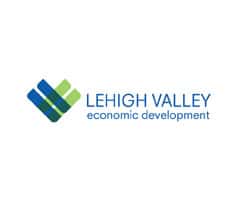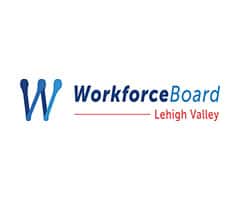The Lehigh Valley Economic Development Corporation (LVEDC) is led by a Board of Directors with expertise that represents a broad cross-section of the regional economy. LVEDC Director and Allied Personnel Services Vice President Susan Larkin, who has more than two decades of experience in the staffing industry, recently shared her insights about the employment challenges businesses face during the COVID-19 pandemic.
Q: Please tell us about Allied Personnel Services and your role there.
A: Since 1984 Allied has been providing staffing and employment solutions to Lehigh Valley employers. We develop long-term partnerships with our clients, and many of the area’s most successful companies have been clients for 30+ years. A key to Allied’s success is our ability to deliver timely and effective talent solutions that are flexible to quickly adjust to changing market conditions.
My role as Vice President is to oversee operations and to consult with our clients, developing strategic staffing programs and sharing critical labor market information based on the diverse insight and experience I’ve gained over my 25 years as an executive in the staffing industry.
Q: Before the pandemic, when unemployment was at record low levels, attracting and retaining talent was the biggest issue facing employers. How has the pandemic changed employer perspectives on the importance of talent supply?
A: The pandemic has elevated employers’ awareness of how fragile the talent supply is and how a high rate of unemployment doesn’t always equate to a robust talent supply. Because of the strong distribution and biotech sectors in our area, layoffs in those areas were not as significant. Add to that the challenges families face finding child care, the fears surrounding a return to work in the face of COVID, and the financial incentives offered through FCCRA [Families First Coronavirus Response Act] and unemployment, and the supply of available talent hasn’t significantly increased. Retaining talent has really become an even bigger focus. Keeping the hardworking, reliable, skilled employees on staff is critical to success when industries see a return to prior levels of workload.
Q: What types of jobs do employers need to fill during the quarantine economy and how do you expect that to change as restrictions are eased?
A: There continues to be a demand for skilled manufacturing roles, logistics staff, and scientific roles like quality control and lab work. As restrictions ease, we expect to see the offices and smaller businesses rebound with a corresponding increase in demand across all skill levels.
Q: What role did school closures and the availability of child care play on employment during the pandemic and how will that affect the local economy as the economy opens back up?
A: It is an extremely difficult hurdle for families. Some people were forced to leave the workforce completely to stay home with small children. Others that had the luxury of moving to a work from home arrangement were forced to figure out how to both educate their own children and keep up with their own work. If daycares and schools do not reopen in the fall, this will have a long-term negative impact on the talent supply and productivity of at home workers. Workers will require increased flexibility for child and family care and employers should be prepared to adapt to accommodate these new employee needs.
Q: Explain why enhanced employment benefits may be a challenge for some employers to find workers?
A: Enhanced employment benefits were intended to provide workers affected by the pandemic with immediate, significant financial assistance to allow them to remain home during the stay-at-home order. Unfortunately for essential businesses that have continued to operate, these enhanced benefits have had the unintended consequence of incentivizing people not to work. Many are able to make significantly more money each week with unemployment than they could earn with the jobs available to them. This has made recruiting for all types and levels of employees a challenge.
Q: How does social distancing and more rigorous disinfecting impact the number of workers an employer can hire even if there is demand for the product or service?
A: Complying with the ever-evolving CDC and OSHA guidelines has forced companies to rapidly adjust their operations. Hiring, training, scheduling and workflows have all been adapted, and in some cases the number of workers able to work in certain areas has been reduced in order to comply with social distancing guidelines. There have been some opportunities created with increased needs for sanitation and medical screening workers. We’ve seen our clients reacting well to these new challenges, and certainly those who are able to pivot to a new normal quickly will see a quicker recovery.
Q: How does the Lehigh Valley talent supply initiative position the region coming out of the COVID-19?
A: The LVEDC Talent Supply Initiative recognized the need to prioritize building a strong workforce before COVID-19, and the work around developing and retaining talent will easily be able to be applied to the post-COVID labor market. Areas such as career pathways, internships, and apprenticeships will all be vital in reshaping the workforce as we move forward, and the work that has been done in these areas already has prepared the Lehigh Valley to respond to the new challenges that employers will face.
Source: LVEDC









